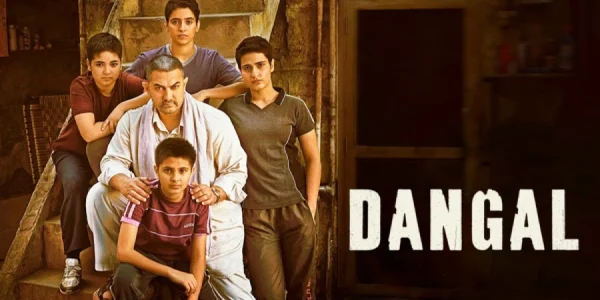The film Dangal stands as a landmark in Indian cinema, blending compelling storytelling with powerful performances to deliver a narrative that resonates globally. Released in 2016, it not only achieved commercial success but also garnered critical acclaim for its portrayal of perseverance, gender equality, and the transformative power of sports. Directed by Nitesh Tiwari, Dangal is celebrated for its authenticity, emotional depth, and cultural significance, making it a milestone in Bollywood’s history. This article explores the various facets of Dangal, from its plot and characters to its impact on society and cinema, providing a comprehensive overview of this influential film.
Introduction to the Film Dangal and Its Significance
Dangal is a biographical sports drama that chronicles the inspiring journey of Mahavir Singh Phogat, a former wrestler turned coach, and his daughters, Geeta and Babita, who rise to become world-class wrestlers. The film’s significance lies in its portrayal of breaking gender stereotypes and empowering women through sports, a theme that struck a chord across India and beyond. It also highlights the importance of perseverance, discipline, and familial support in achieving greatness. The film’s success helped elevate the conversation around women’s sports and gender equality in India, making it not just entertainment but a cultural phenomenon that challenged societal norms.
The film’s narrative is rooted in real-life events, yet it is crafted with emotional depth and cinematic finesse, which contributed to its widespread appeal. Dangal became the highest-grossing Indian film at the time of its release, demonstrating the audience’s appetite for meaningful, well-made cinema. Its significance extends beyond box office numbers, influencing public discourse on gender roles and inspiring countless aspiring athletes, especially young girls. As a film, it exemplifies the power of storytelling to foster social change and promote positive values.
Moreover, Dangal showcased the potential of Indian cinema to tell authentic, relatable stories with universal themes. Its success paved the way for more sports-based and biographical films in Bollywood, encouraging filmmakers to explore diverse narratives rooted in real-life experiences. The film’s cultural impact is also reflected in its recognition at international film festivals and awards, establishing India’s place on the global cinematic stage. Overall, Dangal remains a significant film for its artistic excellence and societal influence.
The film’s significance is further amplified by its strategic marketing and wide-reaching distribution, which ensured its message reached a broad audience. It also fostered a sense of pride and motivation among viewers, especially in rural and underserved communities. Dangal exemplifies how cinema can be a powerful tool for social empowerment, making it a landmark in Indian film history that continues to inspire generations.
In summary, Dangal is more than just a sports movie; it is a cultural touchstone that celebrates resilience, gender equality, and familial bonds. Its importance transcends entertainment, making it a pivotal film that has influenced societal attitudes and cinematic trends alike.
Overview of the Plot and Central Themes of Dangal
Dangal follows the life of Mahavir Singh Phogat, a dedicated wrestler who dreams of winning medals for India but faces numerous obstacles due to societal expectations and personal setbacks. After his wrestling career is cut short, Mahavir turns his focus to coaching his daughters, Geeta and Babita, with the hope of transforming them into champions. The film traces their journey from childhood training sessions to international wrestling competitions, capturing their struggles, triumphs, and the evolving father-daughter relationship.
The central themes of Dangal revolve around perseverance, discipline, and the breaking of gender stereotypes. The narrative emphasizes the importance of hard work and resilience in overcoming societal barriers and personal doubts. It also explores gender roles within Indian society, challenging traditional notions that women should not participate in rigorous sports. The film advocates for gender equality by showcasing women excelling in a male-dominated sport, inspiring viewers to rethink societal norms.
Another prominent theme is familial sacrifice and support. Mahavir’s unwavering belief in his daughters’ potential, despite societal skepticism and personal sacrifices, underscores the importance of family bonds in achieving success. The film also highlights the importance of self-belief and overcoming fear, as Geeta and Babita confront their doubts and external pressures to reach their goals.
Dangal also delves into the cultural and emotional dimensions of sports, depicting the sacrifices athletes make and the resilience required to excel. It portrays the physical and mental challenges faced by the protagonists, emphasizing that success is often the result of relentless effort and unwavering determination. The film’s themes resonate universally, inspiring audiences to pursue their dreams regardless of societal constraints.
Overall, the plot of Dangal is a compelling blend of personal ambition, societal critique, and emotional storytelling. It underscores the idea that with perseverance, support, and determination, individuals can break barriers and redefine their destiny.
Key Characters and Performances in Dangal
At the heart of Dangal are its compelling characters brought vividly to life by a talented cast. Aamir Khan stars as Mahavir Singh Phogat, delivering a nuanced performance that captures the wrestler’s grit, determination, and emotional depth. Khan’s portrayal is widely praised for its authenticity and physical transformation, embodying the struggles and aspirations of a man who refuses to give up on his dreams and those of his daughters.
Fatima Sana Shaikh and Sanya Malhotra play the younger versions of Geeta and Babita, respectively, while the adult characters are portrayed by Sakshi Tanwar and Zaira Wasim. Fatima Sana Shaikh’s portrayal of Geeta Phogat as a determined and focused athlete is both heartfelt and inspiring. Sanya Malhotra brings depth to Babita’s character, illustrating her struggles with self-confidence and societal expectations. The performances highlight the emotional bond between the sisters and their father, adding layers of authenticity to the story.
The supporting cast also contributes significantly to the film’s impact. Sakshi Tanwar as Mahavir’s wife provides a grounding presence, balancing the narrative with her quiet strength and support. Zaira Wasim’s brief but impactful role captures the early struggles of Geeta and Babita, setting the stage for their eventual rise. The ensemble cast’s performances collectively elevate the film, making the characters’ journeys believable and emotionally resonant.
A key aspect of the performances is the physical transformation and rigorous training the actors underwent to authentically depict wrestlers’ lives. Aamir Khan’s dedication to portraying Mahavir’s character included intensive wrestling training and physical conditioning, which added credibility to the film’s sports sequences. The actors’ performances received widespread acclaim for their authenticity and emotional depth, contributing to the film’s overall success.
The characters in Dangal are crafted to evoke empathy and inspire viewers. Their personal struggles, sacrifices, and triumphs serve to reinforce the film’s themes of perseverance and gender equality. The nuanced performances help transform a biographical story into a compelling cinematic experience, ensuring that the characters’ journeys resonate deeply with audiences worldwide.
The Real-Life Inspiration Behind Dangal’s Story
Dangal is based on the true story of Mahavir Singh Phogat, an Indian wrestler who trained his daughters to become international champions. Mahavir’s journey began with his own aspirations for wrestling success, which were curtailed by societal and financial obstacles. Refusing to give up, he dedicated himself to coaching his daughters, Geeta and Babita, with the hope of making them world-class wrestlers.
The real Geeta Phogat became India’s first female wrestler to qualify for the Olympics, earning a gold medal at the Commonwealth Games in 2010. Her success, along with her sister Babita’s achievements, brought national attention to women’s wrestling in India. The Phogat family’s story challenged traditional gender roles and proved that women could excel in sports traditionally dominated by men, inspiring a generation of young athletes.
The film’s narrative closely follows the real-life events, capturing the struggles faced by Mahavir and his daughters, including societal skepticism, financial hardships, and personal sacrifices. The story also highlights the perseverance and resilience required to succeed at the highest levels of sport. Mahavir’s unwavering belief in his daughters’ potential and his unconventional coaching methods are central to the story’s authenticity.
Dangal also sheds light on the cultural context of rural India, where gender stereotypes and social expectations often hinder women’s participation in sports. The real-life Phogat family’s journey symbolizes a broader movement towards gender equality and empowerment through sports. Their story has motivated many young women across India to pursue athletic careers despite societal pressures.
The film’s success in portraying this real-life story has contributed to raising awareness about women’s sports and inspired policy changes to support female athletes. It underscores the importance of perseverance, family support, and challenging societal norms to achieve greatness. The true story behind Dangal continues to inspire and influence the landscape of Indian sports and gender discourse.
Direction and Cinematography in Dangal
Directed by Nitesh Tiwari, Dangal is praised for its skillful direction that balances emotional storytelling with engaging sports sequences. Tiwari’s vision ensured that the film maintained authenticity while also delivering a compelling narrative arc. His meticulous attention to detail in depicting wrestling techniques, training regimens, and cultural nuances contributed significantly to the film’s realism.
The cinematography by S. Ravi Varman captures the rustic charm of rural India and the intensity of wrestling matches with equal finesse. The film employs a mix of wide shots to showcase the physicality of the sport and close-ups that emphasize the emotional struggles of the characters. The visual storytelling enhances the narrative, immersing viewers in the characters’ journeys and the cultural backdrop.
The film’s choreography of wrestling sequences is particularly noteworthy. The sequences are shot with clarity and precision, allowing audiences to appreciate the technical aspects of the sport. The use of slow-motion shots during critical moments heightens the drama and emotional impact of the matches. This combination of technical accuracy and cinematic flair elevates the sports scenes beyond mere action, making them integral to the storytelling.
Dangal also excels in its production design and costume choices, which authentically represent the rural Indian



